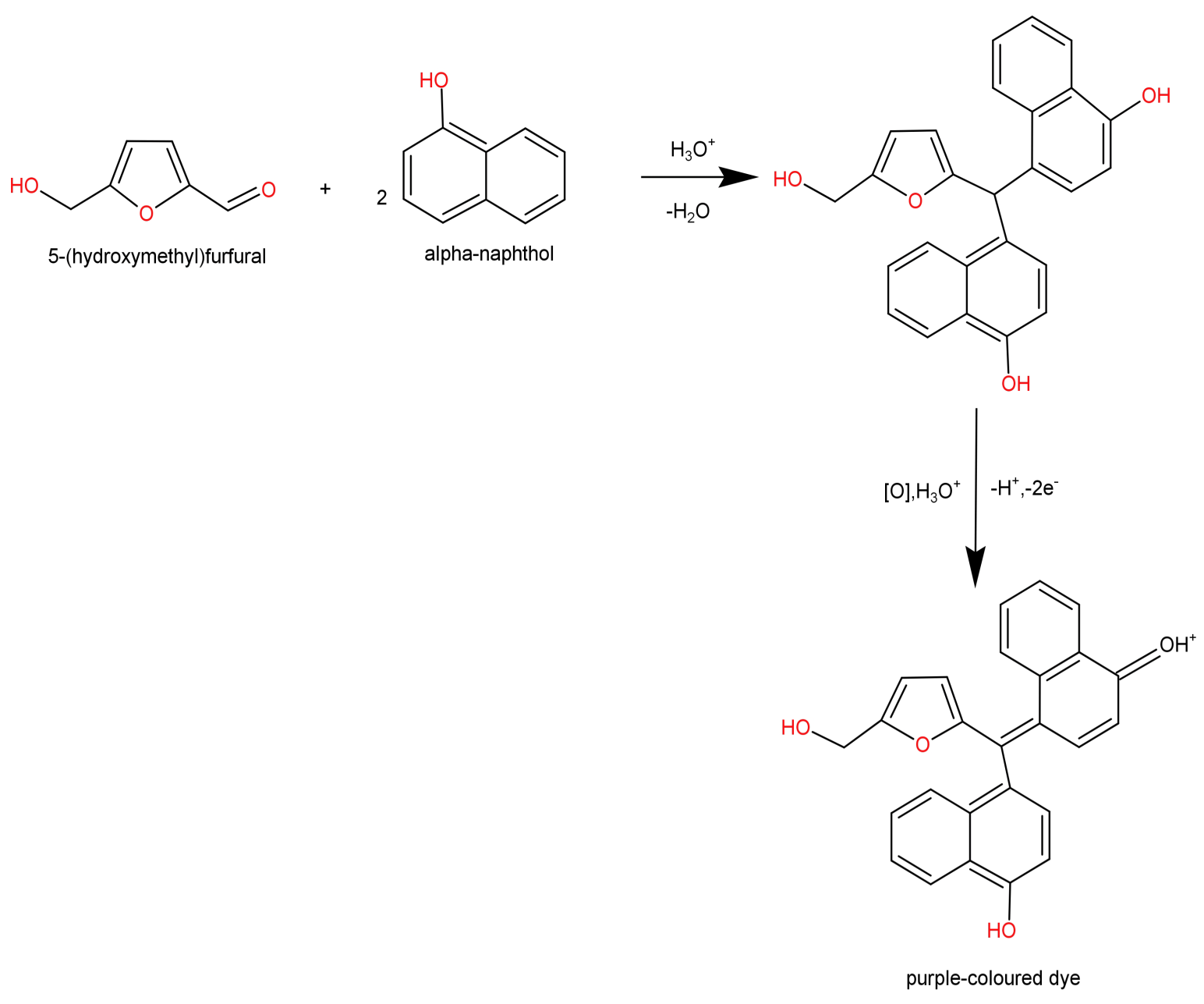
In the Molisch reagent the substance used is:
A) β- naphthol in alcohol
B) α-naphthol in alcohol
C) Resorcinol in alcohol
D) Rosaniline in water
Answer
124.5k+ views
Hint: Molisch test is a test to check for the presence of carbohydrates, whether they are in free or in any combined forms. Such tests always require an end point indication to confirm the presence; it can be odour, colour, effervescence, etc. So, now think which of the options can do so with carbohydrates.
Complete step by step solution:
-Molisch test has been named after Austrian botanist Hans Molisch.
-This test is used to check if carbohydrates are present or not. Monosaccharides, glycoproteins, disaccharides and polysaccharides all react to this test. Although monosaccharides react rapidly, while polysaccharides and disaccharides react a bit slower.
-The reagent used in this test is known as Molisch’s reagent. It consists of: α-naphthol (${C_{10}}{H_8}OH$) dissolved in ethanol (${C_2}{H_5}OH$).
-Principle: Carbohydrates are dehydrated with concentrated${H_2}S{O_4}$ to form its corresponding furfural derivatives which are then condensed by the α-naphthol to give a coloured condensation product.
-here concentrated sulphuric acid (concentrated${H_2}S{O_4}$) acts like a strong dehydrating agent which dehydrates the carbohydrate or sugar into its corresponding furfural (from pentoses) or hydroxymethyl furfural (from hexoses).
-Furfurals are then condensed using α-naphthol, which gives a violet or purple coloured product (ring is formed at the interface). This product is a furfuryl-diphenyl-methane-dye.


- When the carbohydrate is a poly- or disaccharide, first its monosaccharide components are hydrolysed to form the furfural derivatives.
-End point of this test: appearance of purple or violet ring at the interface. If seen then carbohydrate is present otherwise not.
So, the correct option is: B) α-naphthol in alcohol
Note: always remember that although α-naphthol and β-naphthol are isomers, it does not mean they are the same. The difference in the position of alcohol groups in both causes them to differ in their reactivity and that is why this test is not given by β-naphthol.
Complete step by step solution:
-Molisch test has been named after Austrian botanist Hans Molisch.
-This test is used to check if carbohydrates are present or not. Monosaccharides, glycoproteins, disaccharides and polysaccharides all react to this test. Although monosaccharides react rapidly, while polysaccharides and disaccharides react a bit slower.
-The reagent used in this test is known as Molisch’s reagent. It consists of: α-naphthol (${C_{10}}{H_8}OH$) dissolved in ethanol (${C_2}{H_5}OH$).
-Principle: Carbohydrates are dehydrated with concentrated${H_2}S{O_4}$ to form its corresponding furfural derivatives which are then condensed by the α-naphthol to give a coloured condensation product.
-here concentrated sulphuric acid (concentrated${H_2}S{O_4}$) acts like a strong dehydrating agent which dehydrates the carbohydrate or sugar into its corresponding furfural (from pentoses) or hydroxymethyl furfural (from hexoses).
-Furfurals are then condensed using α-naphthol, which gives a violet or purple coloured product (ring is formed at the interface). This product is a furfuryl-diphenyl-methane-dye.


- When the carbohydrate is a poly- or disaccharide, first its monosaccharide components are hydrolysed to form the furfural derivatives.
-End point of this test: appearance of purple or violet ring at the interface. If seen then carbohydrate is present otherwise not.
So, the correct option is: B) α-naphthol in alcohol
Note: always remember that although α-naphthol and β-naphthol are isomers, it does not mean they are the same. The difference in the position of alcohol groups in both causes them to differ in their reactivity and that is why this test is not given by β-naphthol.
Recently Updated Pages
Classification of Drugs Based on Pharmacological Effect, Drug Action

Types of Solutions - Solution in Chemistry

Difference Between Alcohol and Phenol

JEE Main Participating Colleges 2024 - A Complete List of Top Colleges

JEE Main Maths Paper Pattern 2025 – Marking, Sections & Tips

Sign up for JEE Main 2025 Live Classes - Vedantu

Trending doubts
JEE Main 2025 Session 2: Application Form (Out), Exam Dates (Released), Eligibility & More

JEE Main Exam Marking Scheme: Detailed Breakdown of Marks and Negative Marking

JEE Main 2023 January 24 Shift 2 Question Paper with Answer Keys & Solutions

Learn About Angle Of Deviation In Prism: JEE Main Physics 2025

JEE Main 2025: Conversion of Galvanometer Into Ammeter And Voltmeter in Physics

JEE Main Login 2045: Step-by-Step Instructions and Details

Other Pages
NCERT Solutions for Class 12 Chemistry Chapter 6 Haloalkanes and Haloarenes

JEE Advanced Marks vs Ranks 2025: Understanding Category-wise Qualifying Marks and Previous Year Cut-offs

NCERT Solutions for Class 12 Chemistry Chapter 1 Solutions

NCERT Solutions for Class 12 Chemistry Chapter 2 Electrochemistry

NCERT Solutions for Class 12 Chemistry Chapter 8 Aldehydes Ketones and Carboxylic Acids

NCERT Solutions for Class 12 Chemistry Chapter 9 Amines




